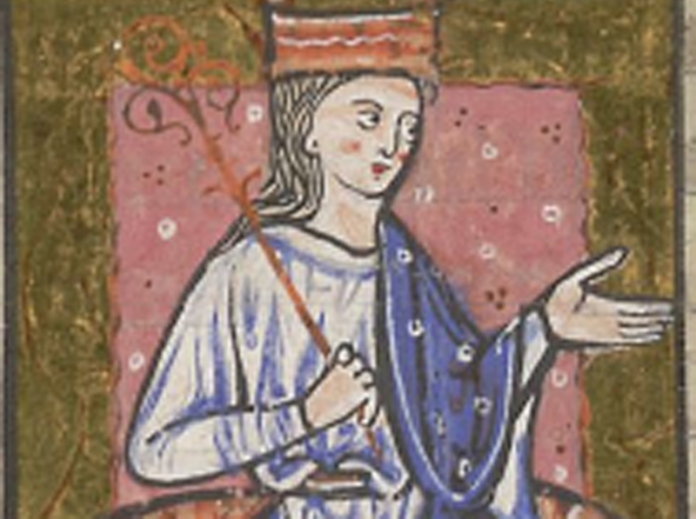Aethelflaed was a high-status Anglo-Saxon woman who lived at a time when few women held power or influence. She was a military leader and political ruler of the Mercians.
Aethelflaed was born around 870AD, daughter of King Alfred the Great, ruler of Essex in England. From early in her marriage to Aethelred, King of Mercia, she helped fight off invading Danish tribes. When Aethelred was killed in battle whilst fighting the Danes, Aethelflaed took over his leadership mantle and led the battles herself.
The Lady of the Mercians Fights the Danes
For seven years after her husband’s death, Aethelflaed continued to fight to keep the freedom of Mercia. The Anglo-Saxon Chronicle tells how she continued her father’s policy of building fortresses, from which soldiers could go out to fight the Danes.
Not content with subduing the Danish forces, she also despatched forces against the Welsh and the Vikings, winning back lands in Derby and Leicester. By 910AD, she had built ten fortresses in around five years and prided herself on personally encouraging her soldiers. Such was her reputation that in 918AD, the Vikings pledged their allegiance to her in York without blood being drawn.
The Wedding of Aethelflaed, Daughter of King Alfred the Great
Aethelflaed was married in around 890AD, to Aethelred of Mercia. Her wedding was as beset with drama as the rest of her life; on her way to Mercia for the nuptials, her wedding band is reported to have been attacked by a band of Danes, anxious to stop the union taking place.
As wife of the Lord of the Mercians, Aethelflaed seems, unusually for a woman of the time, to have taken part in the running of the kingdom, signing agreements whilst her husband was still alive. When he died in 911AD, at the Battle of Tettenhall, near modern-day Wolverhampton, she acceded to the title Lady of the Mercians and the role of protecting those who she presided over.
The Anglo-Saxon Chronicle reports that she ruled for eight years, during which she acted as a administrative and military leader, protecting her kingdom against the usual Viking and Danish threats. The kingdom was very unstable at this time, with alliances regularly changing.
The Death of Aethelflaed in 918AD
Aethelflaed died in 918AD at Tamworth, after a remarkable life in which she achieved more than most women, or even men, of her time. She was buried at St Peter’s Church in Gloucester, and her title went to her daughter Aelfwynn. Aelfwynn was forced to marry King Edward of Wessex, in a bid to unite the two powerful kingdoms of Mercia and Wessex, bringing the country a step closer to the united England which would emerge at the height of the Middle Ages.








